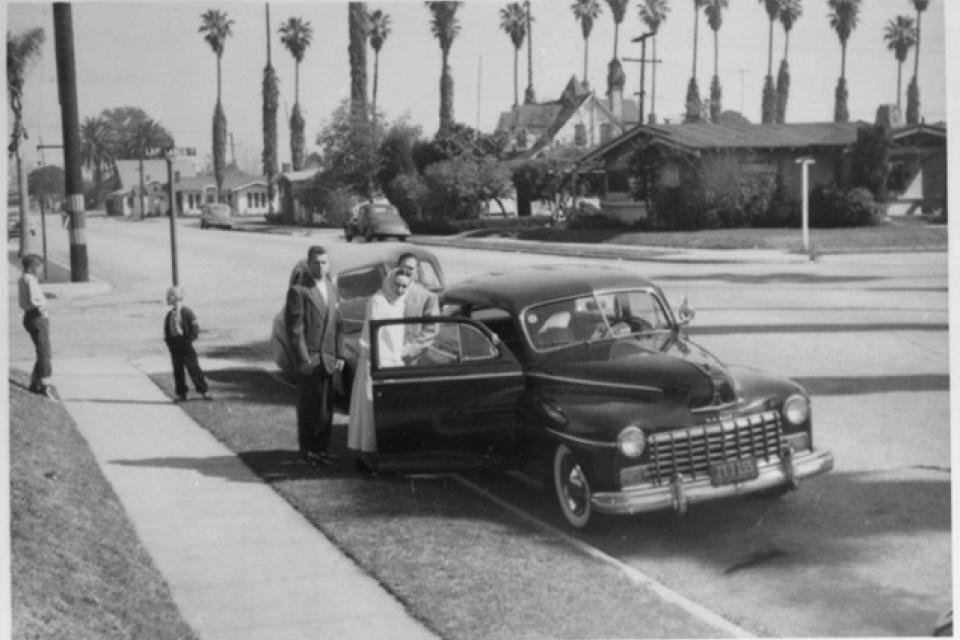
Boyle Heights—George Sanchez
Excerpt from the Presidential Address to the American Studies Association
George Sanchez
November 9, 2001
At the beginning of the twenty-first century, our role as American studies scholars and teachers has taken on dimensions and conditions we could not have imagined just one year ago. The horrific events of September 11, 2001, and the aftermath of a new-fashioned global war on terrorism, have transformed the thinking and direction of many of us who study and interpret social and cultural life in the United States. For me to make sense of my own world in these troubling times, I have deliberately returned to work that I have done for over a decade that gives meaning to my own life as an academic.
Last year, as I prepared for a presentation to a community forum in East Los Angeles, I noticed an elderly African American woman enter the auditorium carrying two plastic grocery sacks full of what appeared to be letters. This forum was being held at the International Institute in Boyle Heights, a place where immigrants from around the world had been welcomed to Los Angeles for the past eighty years. But this meeting brought together different generations of newcomers to Los Angeles that had rarely met: today’s largely recent Latino immigrants in the neighborhood and an older group of white, Jewish, African American, Asian American, and Latino citizens who had first entered Boyle Heights in the mid-twentieth century but no longer lived in the community.
This community forum was sponsored by the Japanese American National Museum, located in Los Angeles, an organization that I have been working with over the past three years. Along with three co-sponsoring organizations—the Jewish Historical Society of Southern California; Self-Help Graphics, a Chicano arts collective; and our host for this forum, the International Institute—we have been formulating a museum exhibition that will open fall 2002 concerning racial interaction in Boyle Heights, a polyglot community of East Los Angeles for most of the twentieth century. This forum was part of the community activities associated with that exhibition. Having been trained as a twentieth-century American historian whose research focuses on immigration and race in urban areas, I know that the importance of the histories of communities like Boyle Heights cannot be underestimated for American studies and ethnic studies. Most of the history written about urban neighborhoods takes as a given that the norm in the twentieth century has been racially exclusive communities best characterized as ghettoes or barrios. But increasingly, historians are finding this to be a mischaracterization across the nation; much more widespread have been racially mixed areas in which the dynamics and hierarchies of racial power and differentiation were played out in neighborhood politics and personal relationships, as well as being sites of interaction which taught everyone the meaning of American identity.
It is appropriate that the strategy used to help encourage each of us to find our civic voice is one that pushes us to work within our local communities. As I return to showing you images from the past and present in the local community I currently work in, Boyle Heights in East Los Angeles, I want to emphasize that there is no one single path towards public engagement, occurring at global, national, and local levels, that speaks to the importance of a wide range of public activity by ASA members. Working with community institutions, our own lives as scholars can be enriched by taking the substantial background of information and talent that we have and putting it in service to meet community needs and goals. Broadening the expanse of what we mean by education undoubtedly will enhance the use of interdisciplinary thinking among teachers, students, and community members in approaching issues of American life and culture. The histories of these communities have a lot to teach us about change in daily life in the U.S., but also we have skills to help interpret how change, particularly in ethnic and racial diversity, has often encouraged community members to find new ways to work together and see difference as a strength and not a liability. In these times of war, as in the past, we must look towards our collective strength as a people without falling into the trap of denying difference of opinion and background. We must use this as an opportunity to engage with each other in cooperative and constructive ways.
George Sanchez, Ph.D. is the Director of the Program of American Studies & Ethnicity, University of Southern California and is an Advisor to the Boyle Heights Project.
